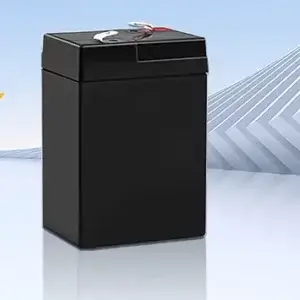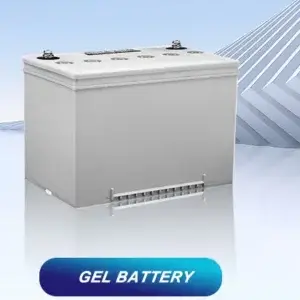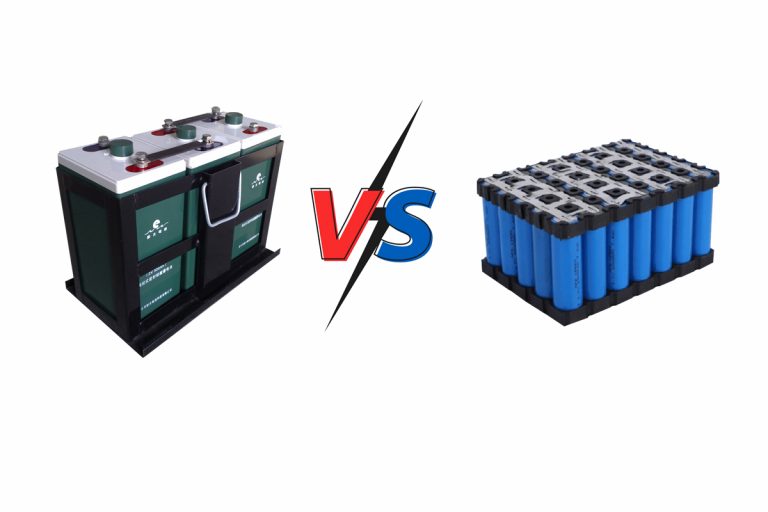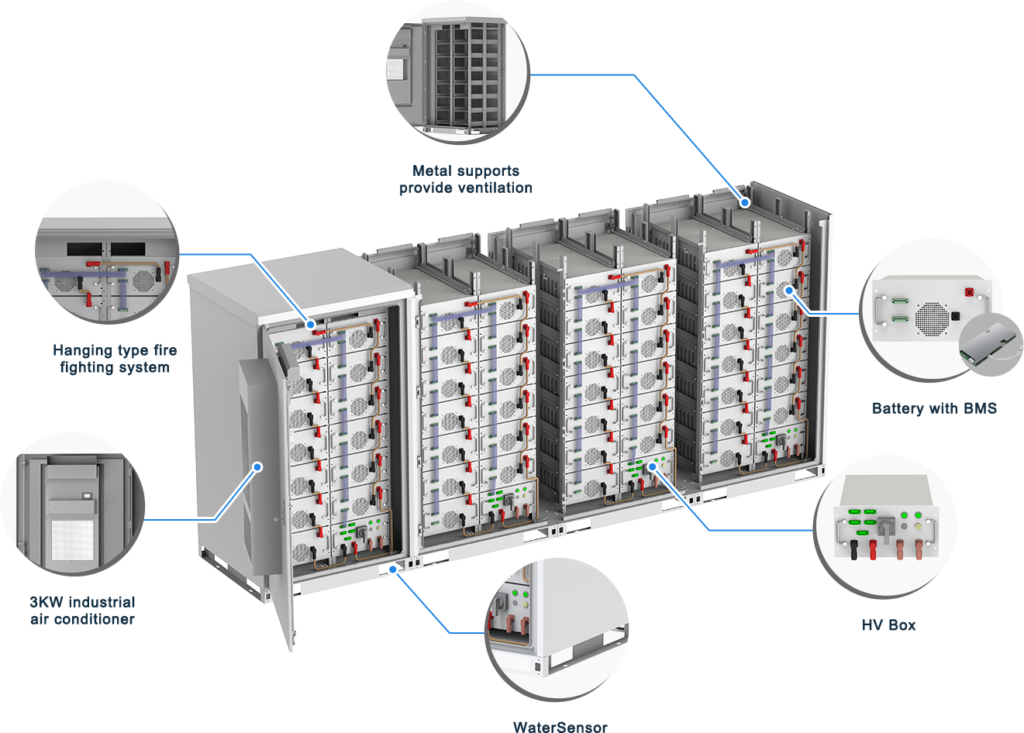Introduction
The Source Of Power And Reliability: Unraveling The Mysterious World Of Marine Batteries

Marine batteries are the lifeblood of boats and marine equipment, providing the essential power needed to navigate accurately and reliably over vast stretches of water. These specialized batteries are built to withstand the harsh marine environment and provide reliable energy for a variety of onboard systems. Understanding the intricacies of marine batteries is critical for any mariner or boat owner who relies on these power sources to propel their vessel through turbulent waters.
Knowledge Of Marine Batteries
The Backbone Of Marine Power Systems
Marine batteries are a unique class of energy storage devices designed specifically for marine applications. Unlike traditional automotive batteries, marine batteries are able to withstand extreme conditions such as constant vibration, humidity, and temperature fluctuations common at sea. These batteries are available in a variety of types, each of which meets the specific power requirements and operating conditions of different types of boats and watercraft.
The Many Faces Of Marine Batteries
Marine batteries can be broadly categorized into two main types: lead-acid batteries and lithium-ion batteries. Lead-acid batteries (including wet cells, AGM batteries, and gel batteries) have been the traditional choice for marine batteries due to their affordability and reliability.
On the other hand, lithium-ion batteries are becoming increasingly popular in the marine industry due to their higher energy density, lighter weight, longer life, and faster charging speeds. How these types of batteries are selected depends on factors such as budgetary constraints, power requirements, space limitations on board, and desired performance specifications.
The Importance Of Marine Batteries In Powering Boats And Marine Equipment
Marine batteries play a pivotal role in powering vital systems on boats and marine equipment. From starting the engine to running navigation lights, communications equipment, water pumps, refrigeration equipment, entertainment systems, and more, marine batteries ensure that all critical functions run smoothly and uninterrupted at sea. The reliance on these reliable sources of power emphasizes their indispensability in ensuring safe and comfortable navigation at sea.
Marine Battery Types
Absorbed Glass Mat (AGM) Batteries

AGM batteries are the preferred choice for marine applications due to their corrosion-resistant design and potential to handle deep discharges. In addition, they are spill-proof and can be installed in various locations, making them very flexible for installation on board. These batteries are ideal for those looking for high overall performance with low retention.
Gel Batteries

Gel batteries use a gel electrolyte, making them resistant to shock and surprise. They are also less prone to reconditioning and have a low self-discharge price. However, they are more prone to overcharging and may require a special charger. This type of battery is for those who prioritize ruggedness and coffee reconditioning and are willing to spend money on specialized charging equipment.
Lead-Acid Batteries

Lead-acid batteries have long been the workhorse of marine power systems. Within this category, there are a variety of options available to suit different marine applications. Wet batteries are simple in design and low cost, and are commonly used in small boats and starter batteries due to their high cranking current.
However, they require regular maintenance and ventilation to prevent gas buildup during charging. Absorbed Glass Mat (AGM) batteries feature a sealed construction that is spill-proof and maintenance-free.
They are ideal for deep-cycle applications and perform well in harsh marine environments. Gel batteries offer similar benefits to AGM batteries, but with added safety features such as being less susceptible to spills and resistant to vibration shock.
Lithium-Ion Batteries

Lithium-ion batteries represent a cutting-edge technology that is revolutionizing the marine industry. Lithium-ion batteries are increasingly favored by boat owners because they offer several advantages over traditional lead-acid batteries. One of the main advantages is the higher energy density, which allows for lighter weight and more compact battery designs without compromising on power output.
Lithium-ion batteries also have a longer lifespan than lead-acid batteries, with many models lasting 10 years or more with proper maintenance. In addition, lithium-ion batteries can be discharged to greater depths without affecting overall performance, providing consistent power output throughout their life.
Advantages Of Lithium-Ion Batteries Over Lead-Acid Batteries

Comparing lithium-ion batteries to lead-acid batteries, especially in marine applications, has several distinct advantages. Lithium-ion batteries charge much faster than lead-acid batteries, resulting in shorter intervals between uses and less downtime on the water.
They also maintain a more stable voltage output throughout the discharge cycle, providing consistent power to sensitive electronic equipment on board. In addition, the high energy conversion efficiency and low self-discharge rate of lithium-ion batteries compared to lead-acid batteries make them an attractive option for crews looking for a reliable, long-lasting power source.
Factors To Consider When Selecting A Marine Battery
- Battery Capacity: Battery capacity refers to the amount of energy a battery can store in Ampere hours (Ah). This unit indicates how long the battery can provide positive energy before it needs to be recharged. It is important to keep battery capacity in mind when it comes to the power requirements of the marine system that the battery is supporting.
- RESERVE POTENTIAL: Reserve capacity is the amount of time a battery can provide the minimum voltage required to perform vital accessories in the event of an alternator failure. It is usually measured in minutes and is an important consideration for marine batteries, especially in emergencies.
- Cold Cranking Amperage (CCA): CCA is a rating that indicates a battery’s ability to start an engine at low temperatures. This value is especially important for marine batteries used in cold climates, as it determines the battery’s performance in cold weather conditions.
- Capacity and power rating: When selecting a Keheng lithium marine battery, its capacity and power rating are one of the primary considerations. Capacity is the amount of energy a battery can store, usually measured in Ampere hours (Ah). Higher capacity means more energy can be stored for the boat’s electrical needs, allowing it to operate longer without recharging. The power rating, usually measured in volts (V), determines how much power the battery can deliver at any given time. The capacity and power rating of the battery must match the energy requirements of the boat to ensure smooth, uninterrupted operation on the water.
- Maintenance Requirements: Different types of marine batteries have different maintenance requirements that can affect battery life and performance over time. Lead-acid batteries may require regular additions of distilled water to keep the electrolyte level up, while AGM or gel batteries usually require no maintenance, but may need to be checked occasionally for signs of wear or damage. Proper maintenance practices are critical to extending the life of marine batteries, such as keeping the terminals clean, ensuring secure connections, and following the manufacturer’s guidelines for charge/discharge cycling.
- Long-term cost-effectiveness: While upfront costs play an important role in choosing a lithium ion marine battery, long-term cost-effectiveness must also be considered. Cheaper options may save money initially but may lead to frequent replacements due to shorter lifespans or poorer performance under harsh conditions.
- High-quality batteries with advanced technologies such as lithium-ion may cost more initially, but their durability, efficiency, and reliability will improve over time. Evaluating factors such as warranty coverage, life expectancy, energy efficiency ratings, and total cost of ownership will help you make an informed decision that balances upfront expense with long-term value for your boating adventures.
- Regular Inspection and Cleaning: Proper maintenance of your marine batteries is critical to ensuring their optimal performance and longevity. A key aspect of maintenance is regular inspection and cleaning of battery components. Begin by visually inspecting the battery for signs of damage, leaks, or corrosion.
Check the battery casing for any cracks or bulges that may indicate internal problems. It’s also important to check the terminals for any buildup of corrosion, which can impede energy flow and lead to poor battery performance.
To clean the terminals, use a mixture of baking soda and water to make a paste and apply it with a brush or cloth. Gently scrub away any corrosion buildup while being careful not to let the solution enter the battery cells. After cleaning, ensure that the terminals are thoroughly dried before reconnecting any cables. Also, make sure there are no obstructions around the battery that could restrict airflow and cause overheating.
Lithium Battery Singing Life Methods
Battery Charging Methods
Effective charging methods play an important role in extending the life of marine batteries. Overcharging and undercharging are common problems that can significantly reduce battery life and performance. To avoid overcharging, invest in a quality marine battery charger equipped with smart charging technology that automatically adjusts the charging rate based on the condition of the battery.
Similarly, undercharging can lead to sulfation – the process by which lead sulfate crystals form on the plates – which can reduce capacity over time. To prevent this, make sure your marine battery is fully charged after each use.
Using a trickle charger during storage will help maintain optimal charge levels without the risk of overcharging. Remember to always use a charger designed specifically for your marine battery type, such as AGM or gel batteries, to ensure compatibility and maximum efficiency.
The Importance Of Battery Ventilation
Proper ventilation around marine batteries is often overlooked, but it plays a vital role in ensuring safe operation and longevity. If the battery is an NMC battery then you need to ensure that the battery is ventilated to ensure that there is no risk of fire or explosion.LFP batteries have a higher ignition point than NMC batteries so the need for ventilation is not as high as it is with NMC batteries when using LFP batteries.
Environmental Impact Of Marine Batteries
Importance Of Proper Disposal And Recycling
Marine batteries can hurt the environment if they are not disposed of properly. If not handled properly, they can contaminate soil and water. Improper disposal can lead to the leaching of these harmful substances into the environment, causing harm to wildlife and ecosystems.
To mitigate these environmental impacts, it is crucial to follow proper marine battery disposal and recycling practices. Recycling marine batteries is not only vital to preventing environmental hazards, but it also recovers valuable materials for reuse.
In addition, proper recycling helps minimize landfills and reduces the release of hazardous substances into the environment. This is a responsible practice that promotes sustainability in the marine industry.
Exploring Sustainable Alternatives: Solar Marine Batteries
As awareness of environmental issues grows, so does interest in sustainable alternatives to power marine equipment. Solar-powered marine batteries are one popular and innovative solution.
These systems utilize solar energy through solar panels mounted on a boat or marine structure to provide clean, renewable power for a variety of applications. Solar-powered marine batteries help reduce reliance on traditional fuel generators, lowering carbon emissions and operating costs while promoting environmentally friendly practices on the water.
Keheng marine energy storage system can help you reduce the carbon footprint of your activities at sea, the solar panels can charge the marine batteries during the day to provide a continuous supply of power without having to rely entirely on grid power or fossil fuels!

- Durability: Rugged and reliable container mechanical features ensure that the system remains operational and intact even in harsh sea conditions.
- Scalability: Standardized design, easy to expand, supports customization of required size, capacity, etc. according to actual needs.
- Safety: Enhanced vibration design for marine environments; integrated design includes fire protection system, temperature control system, and other safety settings to ensure risk-free operation.
- Sustainability: By utilizing clean and renewable energy, ACE’s BESS contributes to emission-free offshore operations.
Conclusion
A comprehensive knowledge of marine batteries makes it clear that these power sources are the lifeblood of boats and marine equipment, ensuring smooth operations on the water. From lead-acid to lithium-ion batteries, each type of battery offers unique benefits and provides unique considerations for marine applications. The selection process requires careful weighing of capacity, size, maintenance requirements, and cost-effectiveness to meet the specific needs of each vessel.




